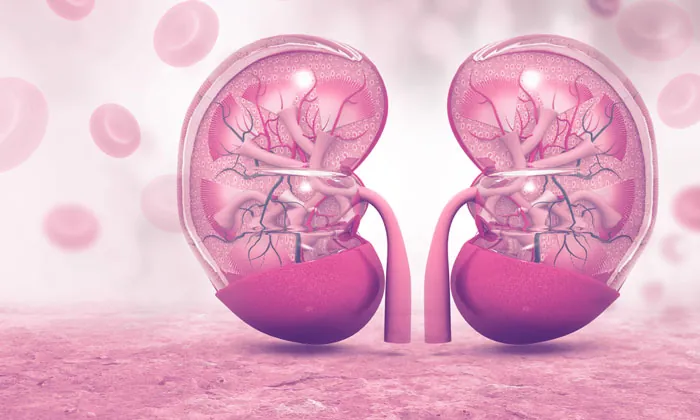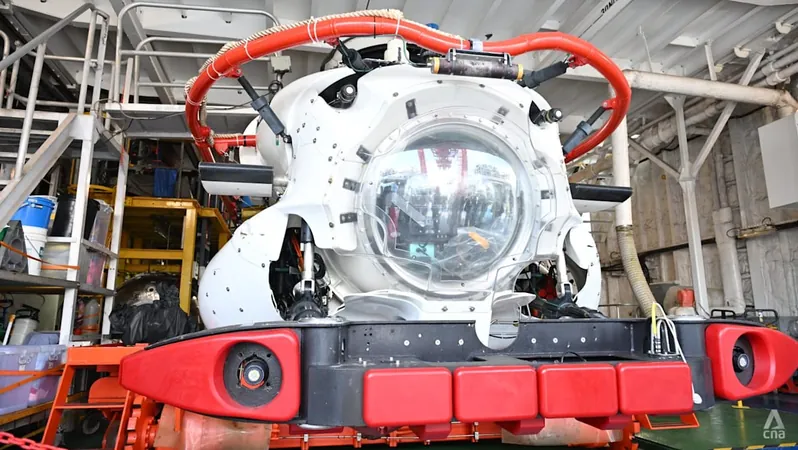
Breakthrough in Lab-Grown Kidneys: A Game-Changer in Kidney Disease Treatment!
2025-09-22
Author: Arjun
USC Scientists Create Game-Changing Lab-Grown Kidneys
In an ambitious leap forward, scientists at USC have engineered the most sophisticated lab-grown kidney structures to date, innovatively combining essential components into what they call ‘assembloids.’ These remarkable creations not only mimic real kidney functions but also promise to revolutionize the way we model complex kidney diseases.
A Revolutionary Step Forward
Led by the distinguished Zhongwei Li, a Associate Professor at the Keck School of Medicine, this groundbreaking research, detailed in the latest issue of *Cell Stem Cell*, showcases the creation of more developed and intricate lab-grown organoids than ever seen before. "This is a revolutionary tool for creating more accurate models for studying kidney disease, affecting one in seven adults," Li said passionately. The team's ultimate goal? To pave the way for functional synthetic kidneys that could benefit the 100,000 patients in the U.S. on the transplant waiting list.
From Simple Organoids to Complex Assembloids
Previously, the researchers constructed organoids featuring nephron structures—the kidney's microscopic filtration units—and those imitating the kidney’s collecting ducts. However, the current team, featuring trailblazers such as Biao Huang and Pedro Medina, has successfully merged these elements into pioneering ‘assembloids.’
Maturing in Real Living Environments
The scientists fine-tuned the growth conditions for both mouse and human assembloids, ultimately transplanting them into living mice. This crucial step allowed the structures to mature further, developing connective tissues and blood vessels seamlessly. "By utilizing the body’s natural environment, we harnessed the kidney progenitor cells' inherent ability to self-assemble," Li explained, emphasizing a promising path toward creating fully functional synthetic kidneys.
Achieving Real Kidney Functions
Remarkably, both mouse and human assembloids exhibited authentic kidney-like functions, including blood filtration, absorption of proteins like albumin, hormone secretion, and early indications of urine production. This advancement marks a significant milestone in kidney research.
Beyond Early Development
While past organoids reached only an embryonic development stage, the mouse assembloids have matured to a level comparable to that of a newborn mouse kidney, based on gene activity and other metrics. Human assembloids also progressed past embryonic stages, although their maturity level isn't definitively established due to limited newborn human kidney samples.
A New Era in Disease Modeling
This study has uncovered that assembloids can act as precise models for intricate human kidney diseases. For instance, pieces of research have shown human assembloids created from cells with a single flawed gene—the PKD2 gene—linked to autosomal dominant polycystic kidney disease (ADPKD). Strikingly, these diseased assembloids developed significant kidney cysts in living mice, showcasing disease characteristics like inflammation and fibrosis that hadn't been effectively modeled before.
A Lifesaving Future for Kidney Patients
"Our study equips us with a powerful new tool for exploring a wide array of complex kidney diseases," Li remarked. "Additionally, it lays a robust foundation for engineering functional synthetic kidneys, offering hope for patients in dire need of lifesaving interventions." This breakthrough could pave the way for unprecedented advancements in kidney disease treatments, marking a bright future for millions!





 Brasil (PT)
Brasil (PT)
 Canada (EN)
Canada (EN)
 Chile (ES)
Chile (ES)
 Česko (CS)
Česko (CS)
 대한민국 (KO)
대한민국 (KO)
 España (ES)
España (ES)
 France (FR)
France (FR)
 Hong Kong (EN)
Hong Kong (EN)
 Italia (IT)
Italia (IT)
 日本 (JA)
日本 (JA)
 Magyarország (HU)
Magyarország (HU)
 Norge (NO)
Norge (NO)
 Polska (PL)
Polska (PL)
 Schweiz (DE)
Schweiz (DE)
 Singapore (EN)
Singapore (EN)
 Sverige (SV)
Sverige (SV)
 Suomi (FI)
Suomi (FI)
 Türkiye (TR)
Türkiye (TR)
 الإمارات العربية المتحدة (AR)
الإمارات العربية المتحدة (AR)